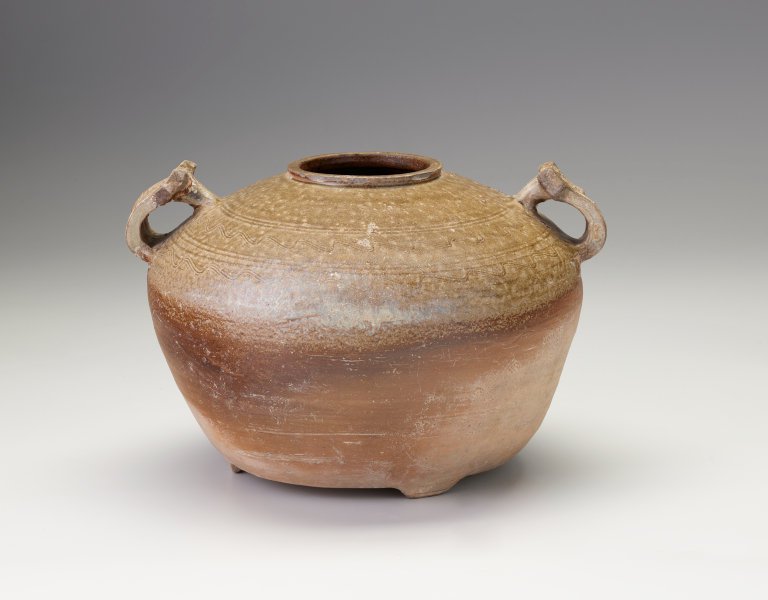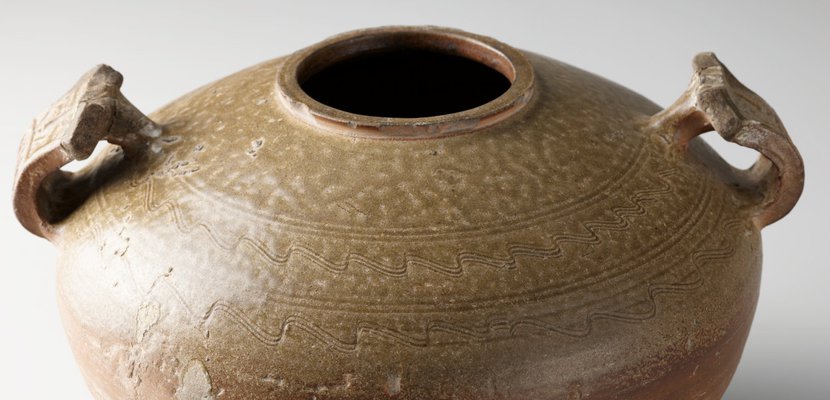
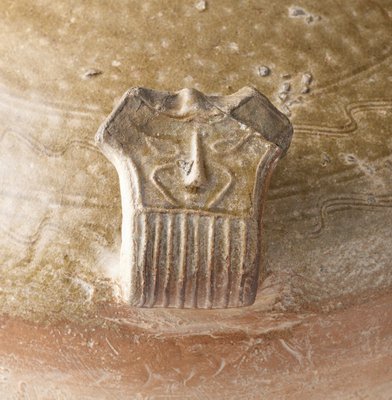
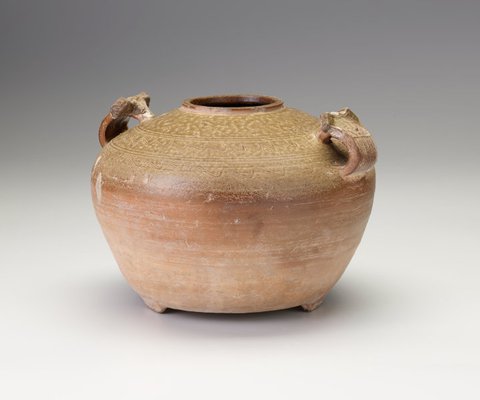
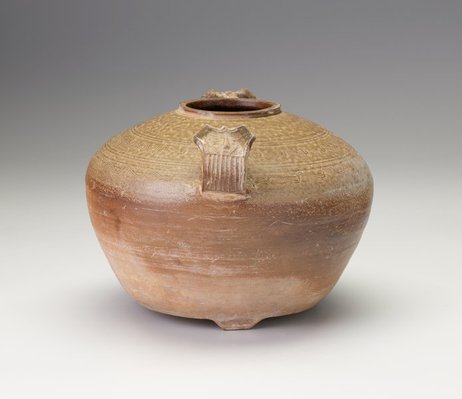
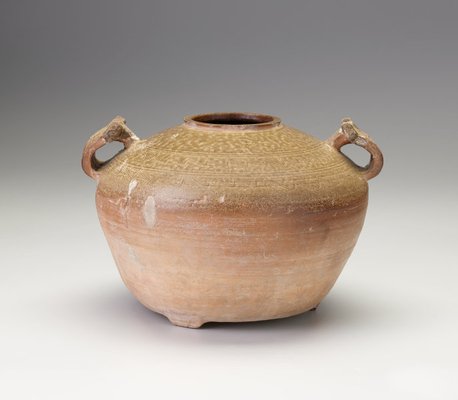
-
Details
- Places where the work was made
-
Jiangsu Province
→
China
Zhejiang Province → China
- Period
- Han dynasty 206 BCE - 220 CE → China
- Date
- 3rd century-4th century
- Media category
- Ceramic
- Materials used
- stoneware with olive glaze
- Dimensions
- 10.8 cm diam. of mouth; 21.3 x 32.5 cm
- Signature & date
Not signed. Not dated.
- Credit
- Gift of the Art Gallery Society of New South Wales 1962
- Location
- Not on display
- Accession number
- EC1.1962
- Copyright
- Share
-
-
About
This piece is a typical example of the food storage jars found in tombs in the eastern region of China, from north Jiangsu to central Zhejiang and west into Anhui. It has three feet and two moulded stylised animal mask handles, with two concentric bands of a combed wavy pattern decorating the upper part which is also covered with an olive glaze.
From similar extant examples, we can ascertain that these jars were originally made with covers that had a central knob. Like other Han ceramic shapes, there was a bronze prototype for this shape, an obvious legacy of which is to be seen in the mask handles on the jar. Early examples were made purely as funerary vessels (some have been found labelled and still containing foodstuffs in burial), but later pieces apparently served as storage jars and food containers in this life as well. From the technical point of view, pieces of a large class of high-fired stoneware with a feldspathic body, which, before the existence of earlier glazed stonewares of the Shang dynasty was documented, were given the name "proto-porcelain" to indicate that they represented, in essence, the beginnings of porcelain. They are the ancestors of Yue type celadons and the porcellaneous Tang wares.
Jackie Menzies, 'Early Chinese Art', AGNSW, 1983. cat.no. XVI (illus.)
-
Places
Where the work was made
Jiangsu Province, Zhejiang Province
-
Exhibition history
Shown in 4 exhibitions
Chinese Ceramics, Art Gallery of New South Wales, Sydney, 11 Aug 1965–12 Sep 1965
Early Chinese art, Art Gallery of New South Wales, Sydney, 26 Feb 1983–08 May 1983
Conversations through the Asian collections, Art Gallery of New South Wales, Sydney, 25 Oct 2014–13 Mar 2016
The Way We Eat, Art Gallery of New South Wales, Sydney, 03 Apr 2021–13 Jun 2022
-
Bibliography
Referenced in 6 publications
-
Art Gallery of New South Wales, Art Gallery of New South Wales picturebook, Sydney, 1972, 139 (colour illus.).
-
Mr V V W Fretwell, Mr L G Harrison, Ivan McMeekin and J. Hepburn Myrtle (Compilators), Chinese ceramics, Sydney, 1965, 17. cat.no. 4 'Storage jar with three feet and two human mask handles on shoulder' is the title of this object in this publication.
-
Jackie Menzies, Asian Collection Handbook, Art Gallery of New South Wales, 'Early Chinese Art', pg. 18-29, Sydney, 1990, 18 (colour illus.).
-
Jackie Menzies, Early Chinese Art, Sydney, 1983, (illus.) not paginated. cat.no. XVI. In this publication this work is titled 'Storage jar ('pou'). See 'Further Information' for text.
-
Jackie Menzies, Look: 1953-2003 celebrating 50 years, 'Asian Treasures', pg. 57-59, Sydney, May 2003, 58 (colour illus.).
-
Jackie Menzies (Editor), The Asian Collections Art Gallery of New South Wales, 'Early Ceramics', Sydney, 2003, 102 (colour illus.).
-
